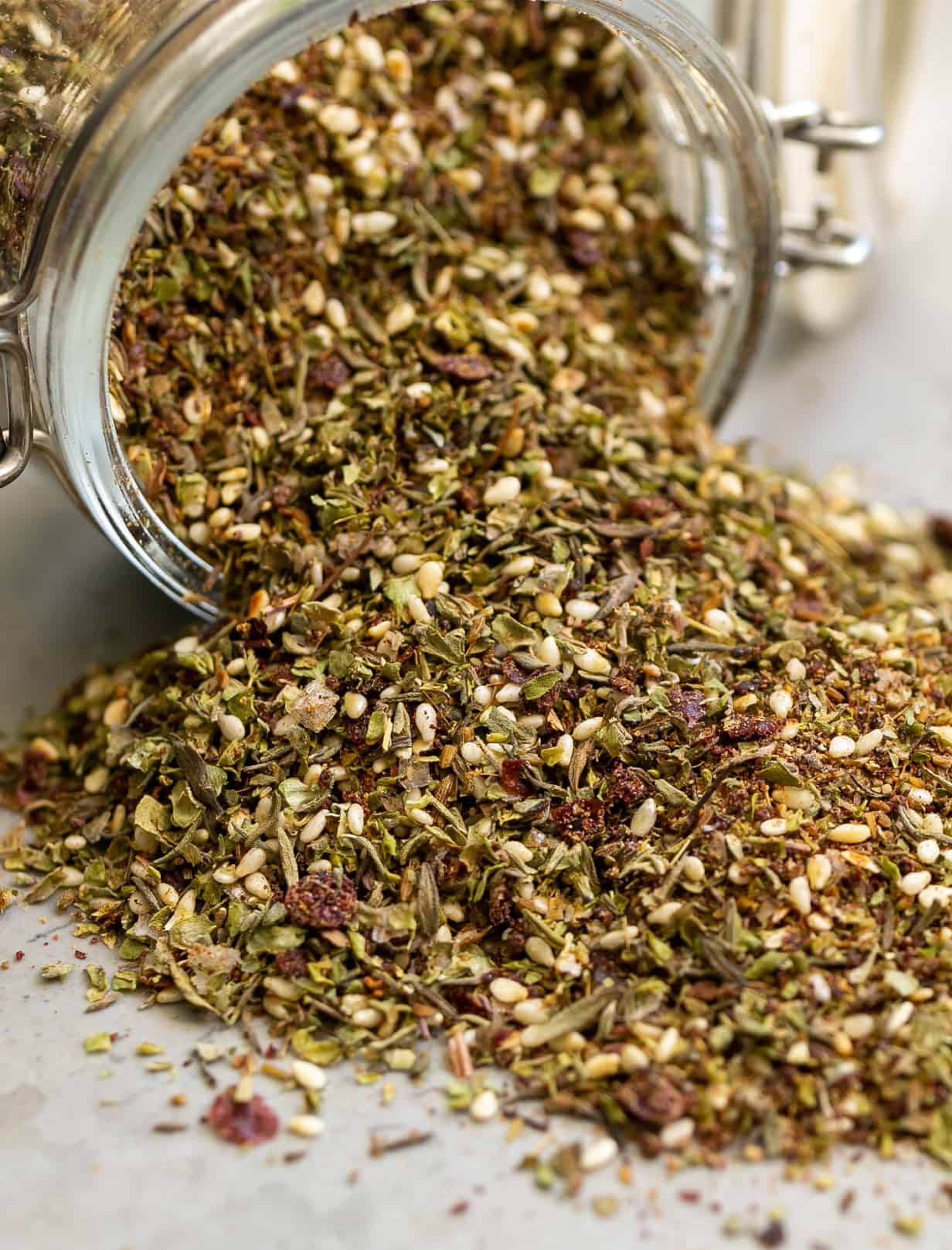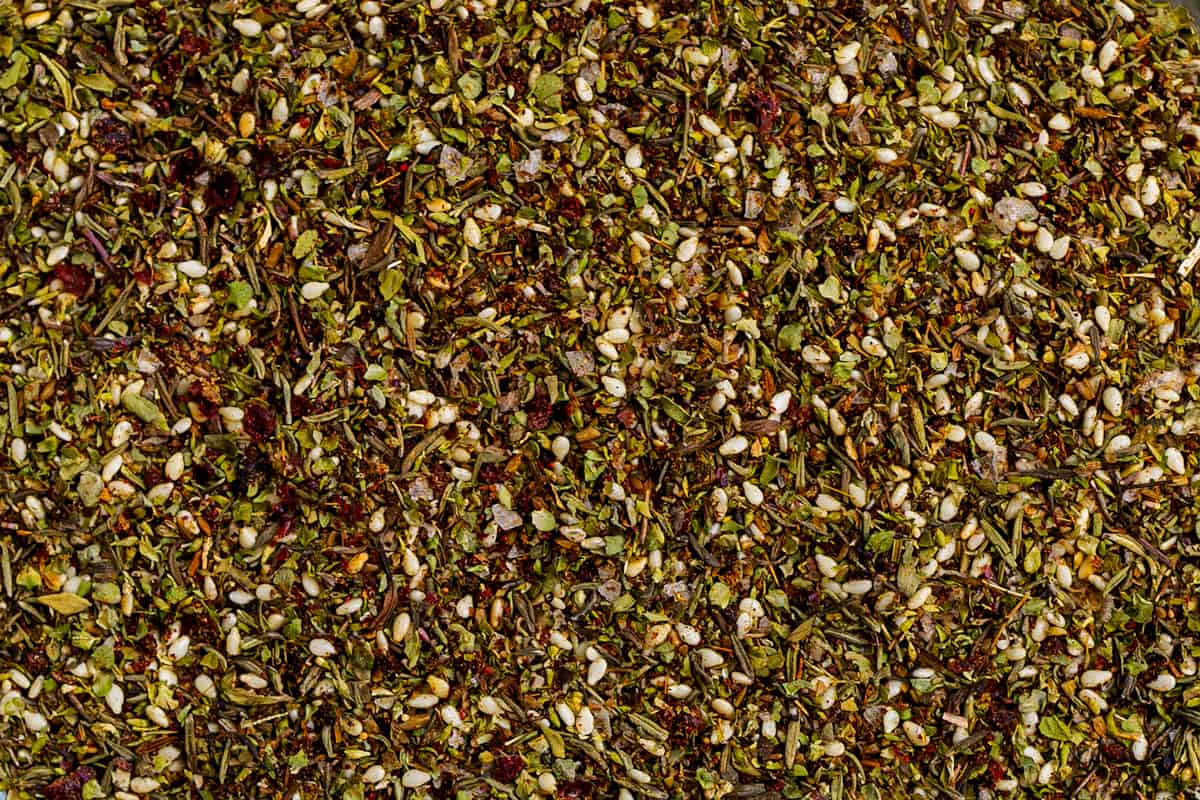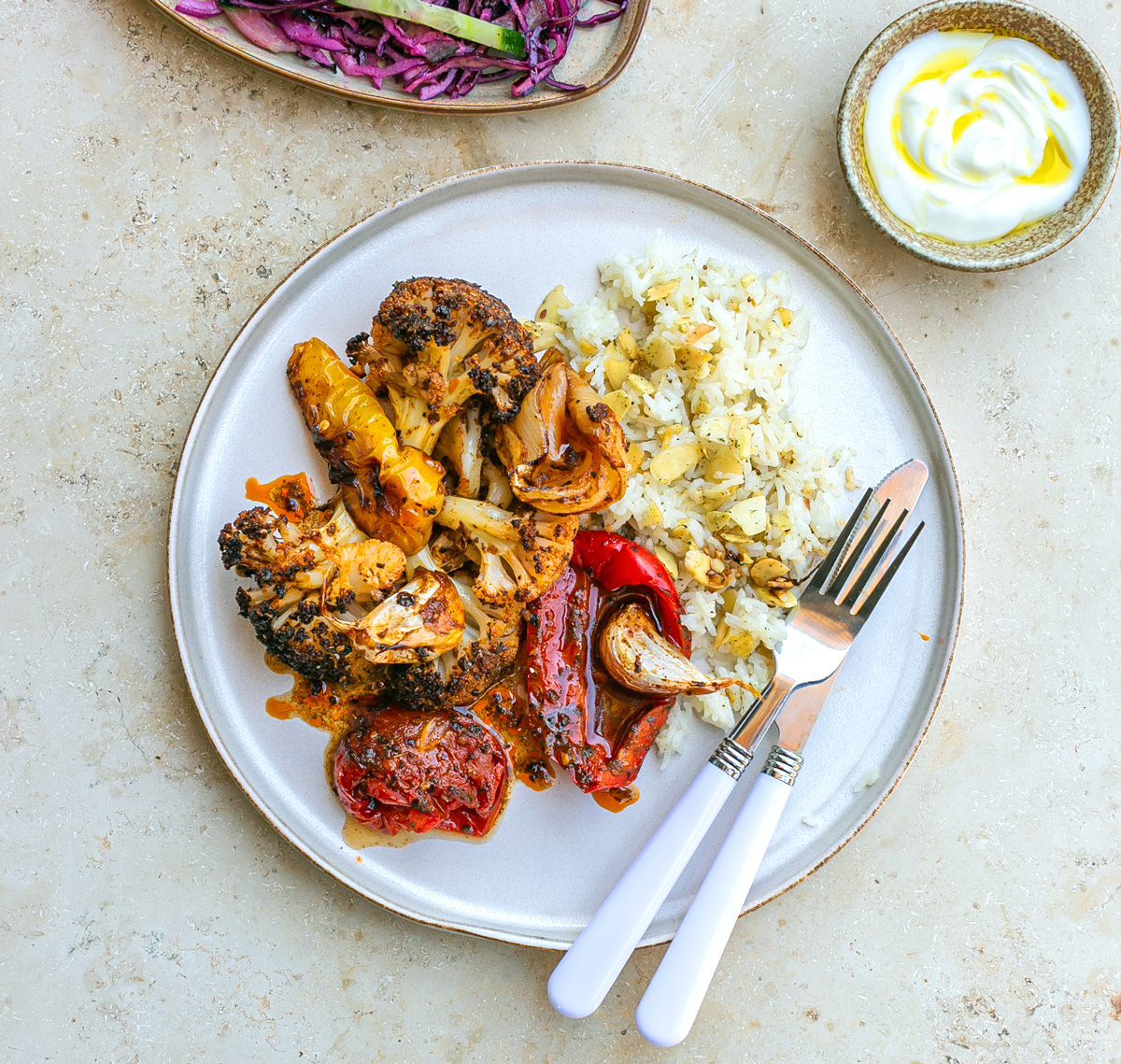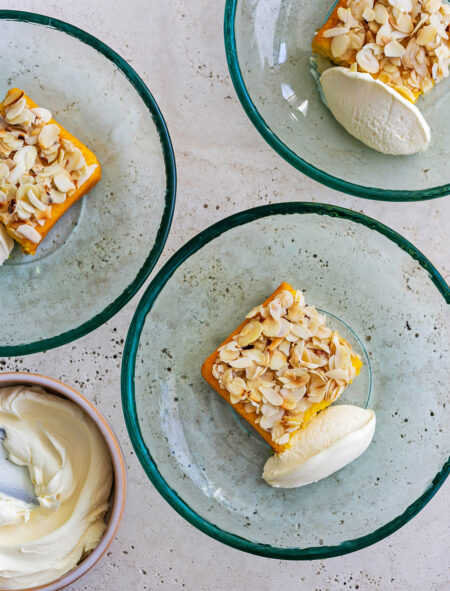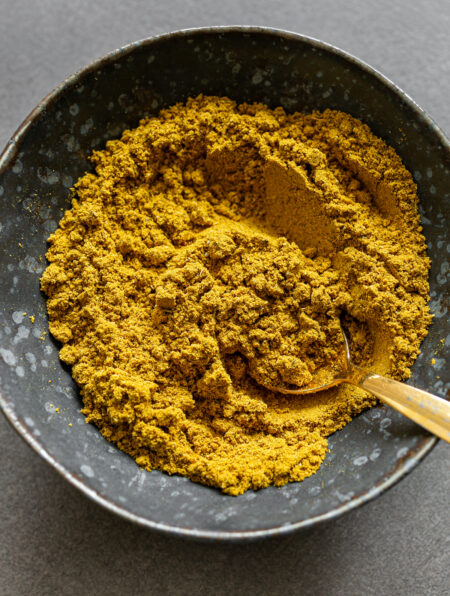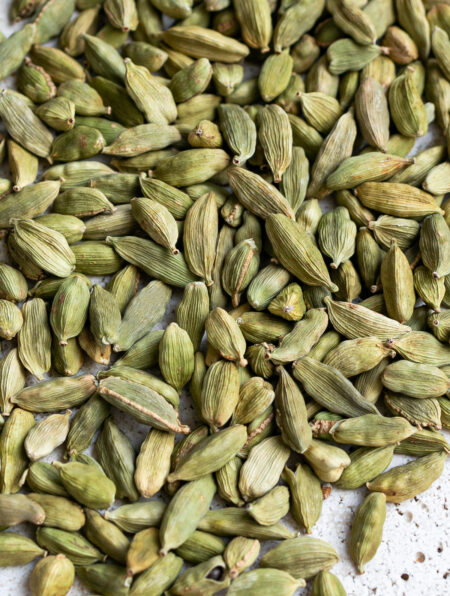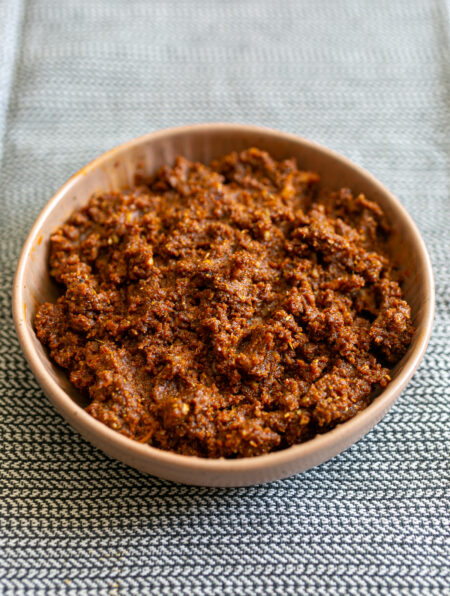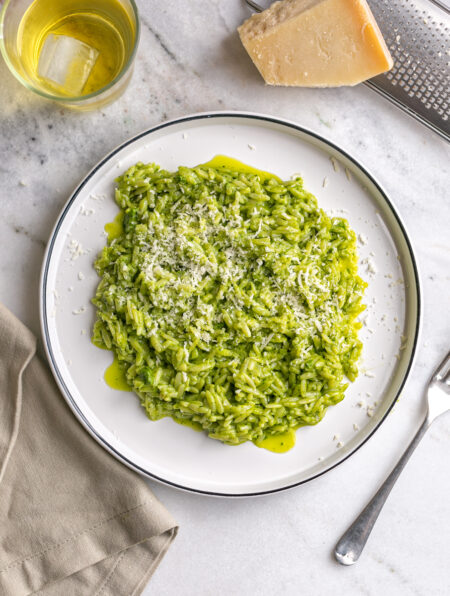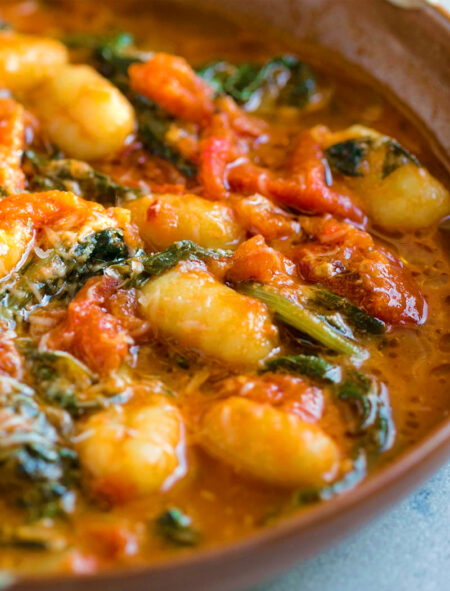Pictured: Za’atar Spice Blend
What is Za’atar?
Za’atar is a Middle Eastern spice blend with a history of use dating back to medieval times. Nowadays, a typical blend for za’atar consists of cumin, dried thyme, oregano, marjoram, sumac, toasted sesame seeds and salt, but as it goes with all ancient spice blends, the recipe varies from region to region.
History of Za’atar
Za’atar (Arabic and Hebrew) simply refers to any type of wild herb that grows in the Fertile Crescent (The Fertile Crescent is a crescent-shaped region in the Middle East spanning Iraq, Syria, Lebanon, Palestine, Israel, Jordan, and Northern Egypt, together with the northern region of Kuwait, the Southeastern region of Turkey and the Western portion of Iran. Some authorities also include Cyprus)
In some local regions, Za’atar most often refers to a plant called Origanum syriacum, a kind of bitter mint or wild oregano, also known as Hyssop. The original blend for Za’atar mixes hyssop with toasted sesame seeds, salt and sumac. Only later as hyssop became harder and harder to acquire did other dried herbs such as thyme and oregano become incorporated into the blend.
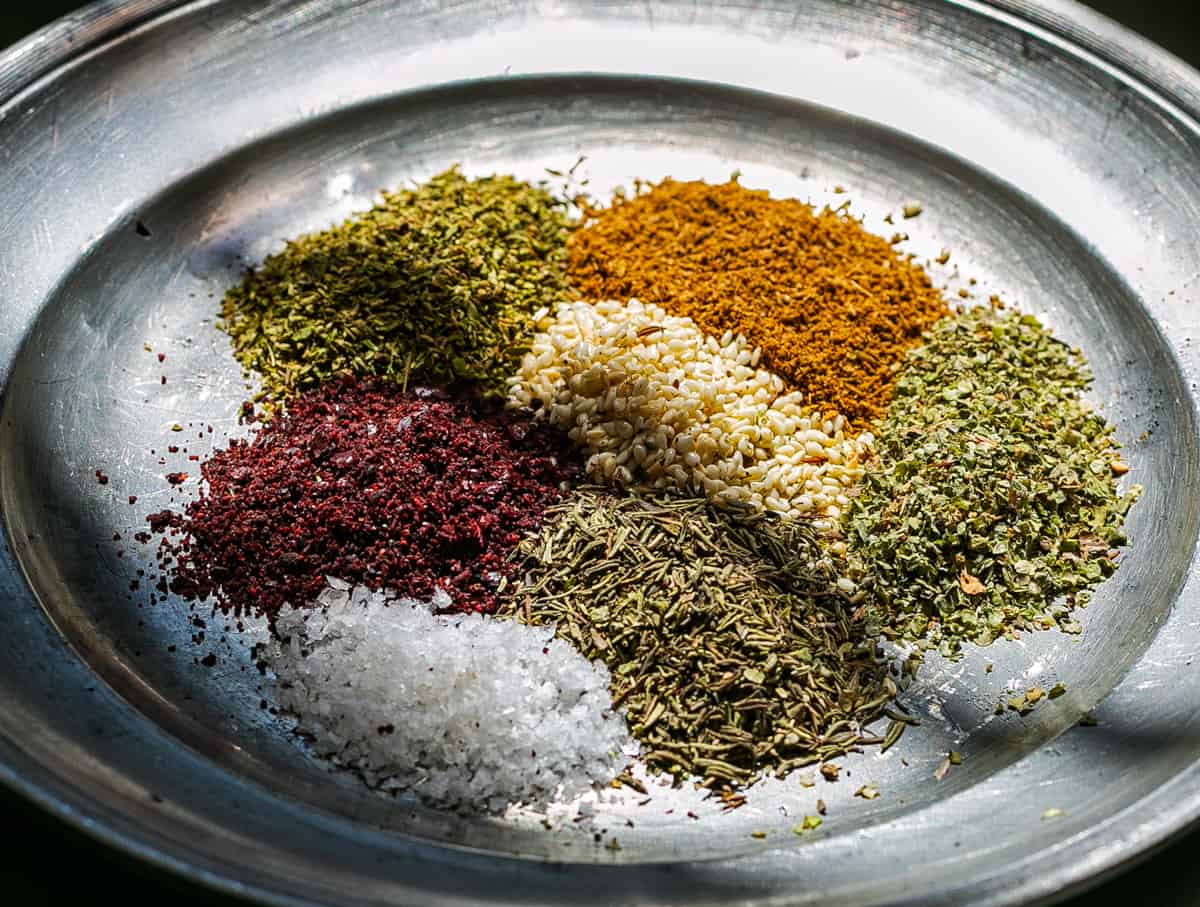
How do I use Za’atar?
Za’atar is often referred to as a condiment and not a spice because it isn’t usually used within a dish. Its main function is to act as a garnish for meats, stews, vegetables, hummus, dips and many other meals. One of the most famous ways to use Za’atar is to mix it with salt and sprinkle it over a popular bread type known as Manakeesh.
Aside from the traditional use in Middle Eastern recipes, the nutty earthy blend of dried herbs and spices is versatile enough to be used in many modern-day and international / fusion recipes such as pasta, roast dinners, BBQs, dips, sprinkled over cheese and almost any kind of bread.

What does Za’atar taste like?
Za’atar has a full flavour, both herbal, sweet and with elements of citrus. Sumac brings the bright punchy lemon flavour, oregano’s slight bitterness balances the sweetness of marjoram, and sesame provides an earthy, nutty satisfying crunch.
Keep scrolling below for Flaevors Za’atar recipe and for recipe suggestions including the recipe for Za’atar spice blend…
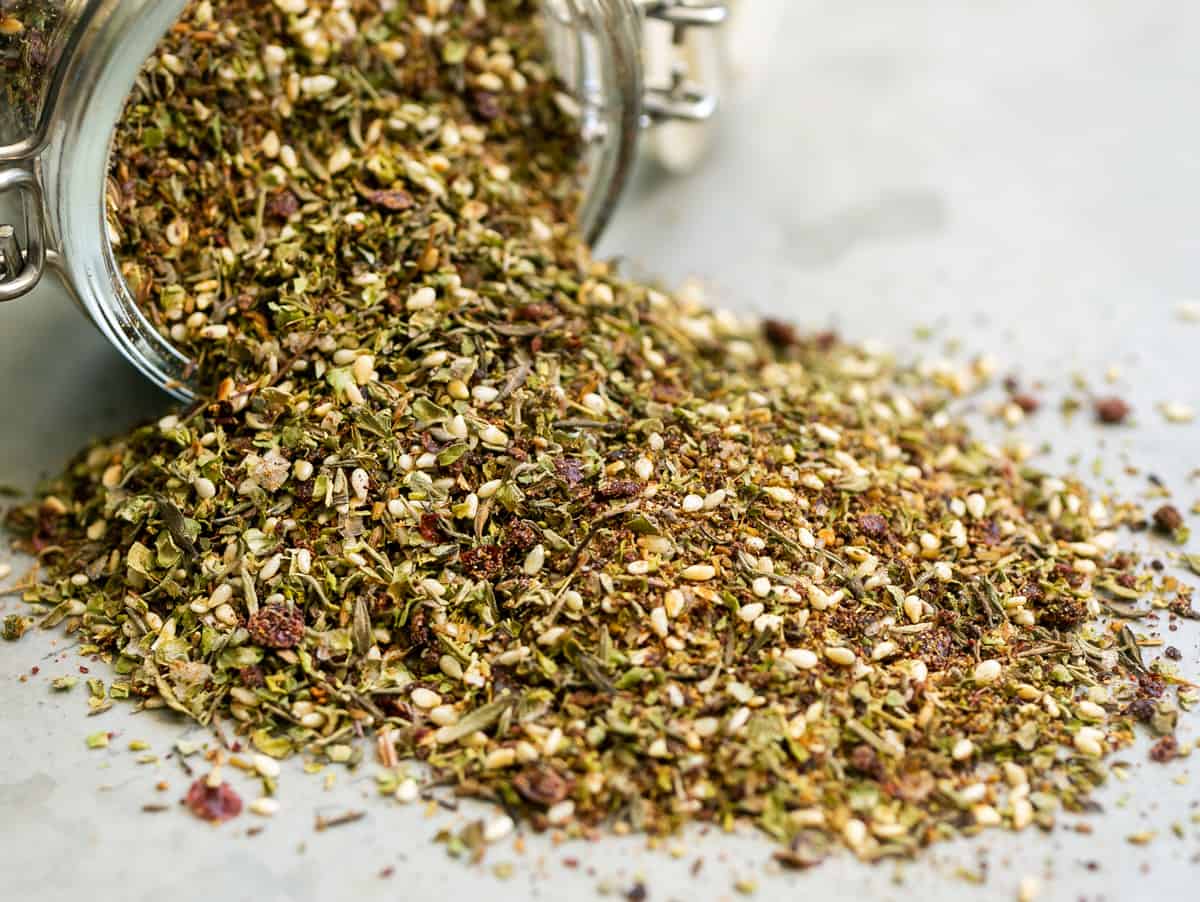
Cooking With Za’atar
Having explained its most popular use as a condiment or garnish, Za’atar is not completely unusable as a cooking ingredient and often used as part of a rub on meat before roasting or grilling, mixed into a pilaf, sauce or as used in these delicious recipes on Flaevor:
Oven Roasted Green Beans Tomatoes and Feta
Perfectly roasted green beans with tomatoes and feta. Za’atar is used within the cooking process this time, infusing the oil for basting the vegetables upon serving. Recipe here:
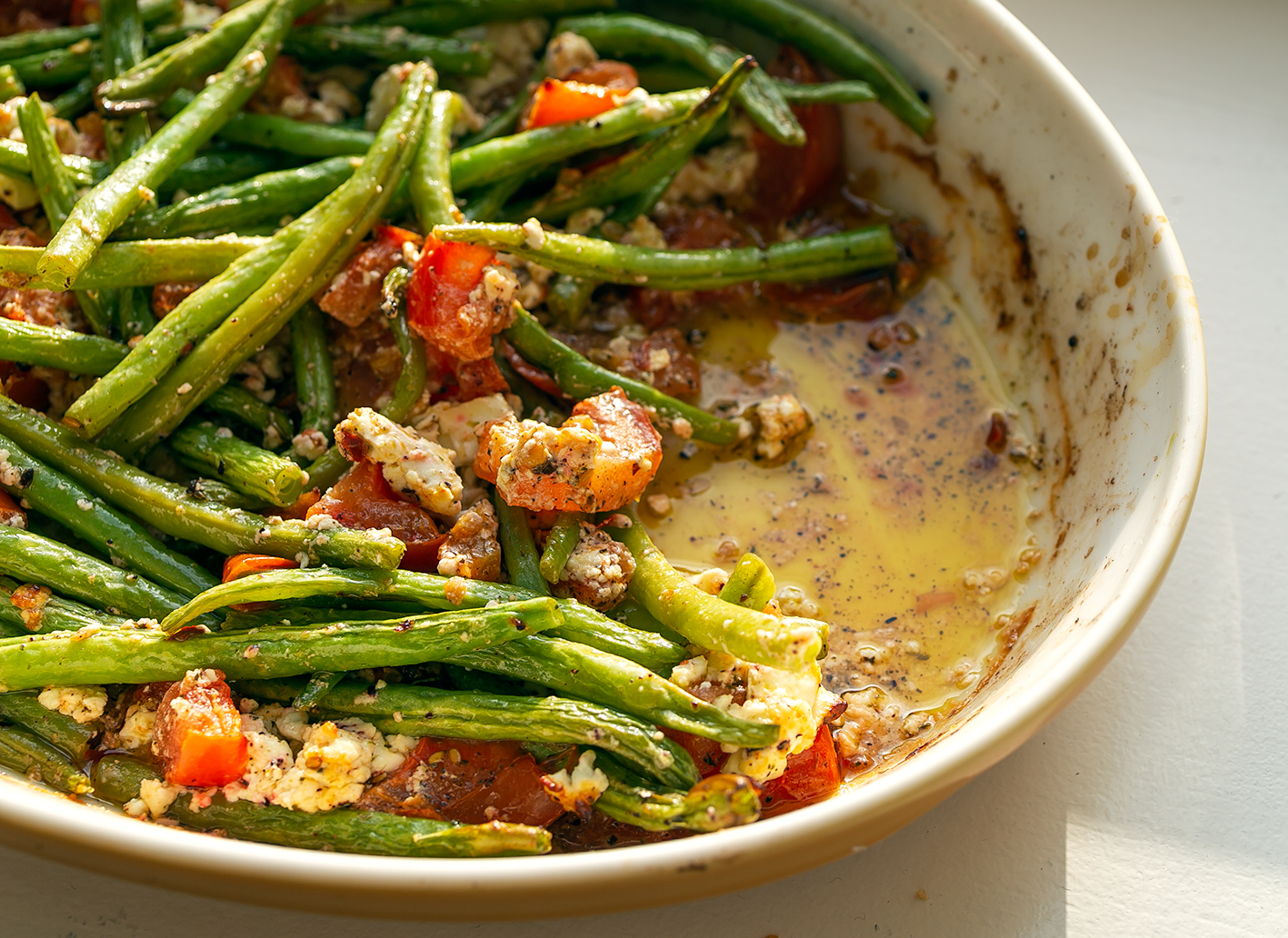
Oven-Baked Baharat Rice
Inspired by the ancient Middle Eastern dish known as Mejadra which uses baharat spice, juicy aubergines and crunchy flaked almonds, this comforting one-pot rice dish is completed by garnishing with Za’atar. Recipe here:
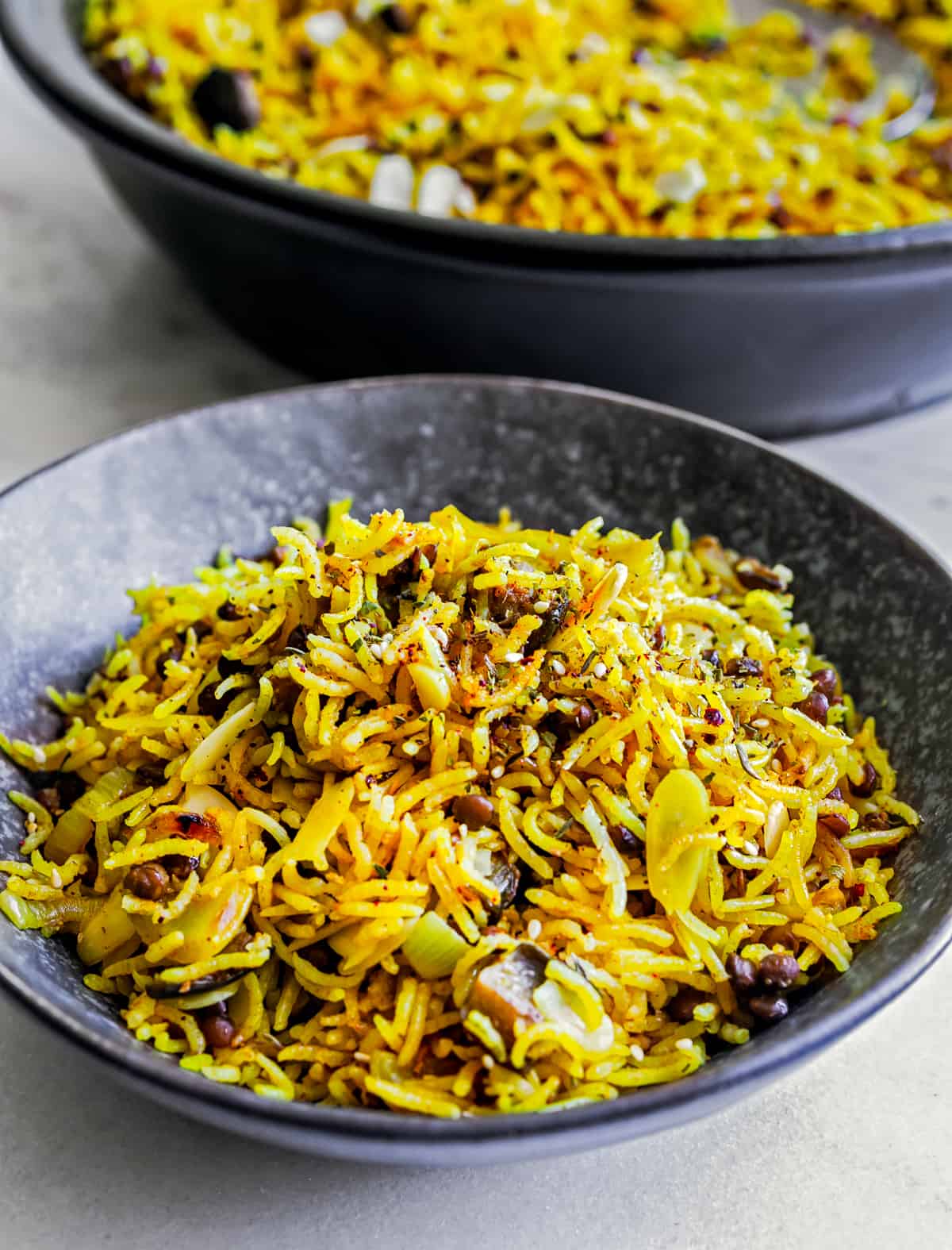
Roasted Cauliflower with Spiced Butter Rice
Za’atar provides the base of flavour coating the vegetables and infusing pan juices and oil. At the end of roasting, you’ll find a delicious zingy sauce to spoon over soft juicy roasted tomatoes, peppers, garlic bulbs and buttery rice. Recipe here:
Popular ways to use Za’atar include:
- Sprinkled over fried or poached eggs
- As a garnish on yogurt, hummus or labneh
- Added to dips and sauces
- Used to season bread and flatbreads
- Sprinkled on roasted vegetables such as cauliflower, carrot, potatoes and aubergine
- Mixed with olive oil and drizzled over fresh or roasted tomatoes
- Used as part of a rub or marinade on fried, roasted or grilled meats and fish
- To add flavour to kebabs or shawarma
- Mixed into rice, beans or lentils
- Mixed with other spice blends such as Baharat
- As a garnish on Manakeesh, a type of Middle Eastern ‘Pizza’
Recipe for Za’atar Spice Blend
PrintZa’atar Spice Blend
Za’atar is a Middle Eastern spice blend with a history of use dating back to medieval times. Nowadays, a typical blend for za’atar consists of cumin, dried thyme, oregano, marjoram, sumac, toasted sesame seeds and salt.
- Prep Time: 5 Minutes
- Cook Time: 1 Minute
- Total Time: 7 Minutes
- Yield: 55g 1x
- Category: Spice Blends
- Method: Blending
- Cuisine: Middle Eastern
Ingredients
- 2 tbsp cumin seeds
- 2 tbsp toasted sesame seeds
- 2 tbsp dried oregano
- 2 tbsp dried thyme
- 2 tbsp dried marjoram
- 2 tbsp sumac
- 1 tsp sea salt flakes
Instructions
- dry roast cumin seeds until fragrant. Transfer to a pestle & mortar or small blender along with sea salt flakes and grind into a powder.
- Combine salt and cumin with all other ingredients. Transfer to an airtight container and keep in a cool dark cupboard. Will last up to 2 months before the flavour starts to fade.
Notes
Spice mixes are always best used within 1 – 2 months for maxiumum flavour and freshness so avoid making very large batches that cannot be used in time.
Keywords: Za’atar spice blend, za’atar ingredients, za’atar recipes, Za’atar history, what is za’atar, middle eastern spice blend

